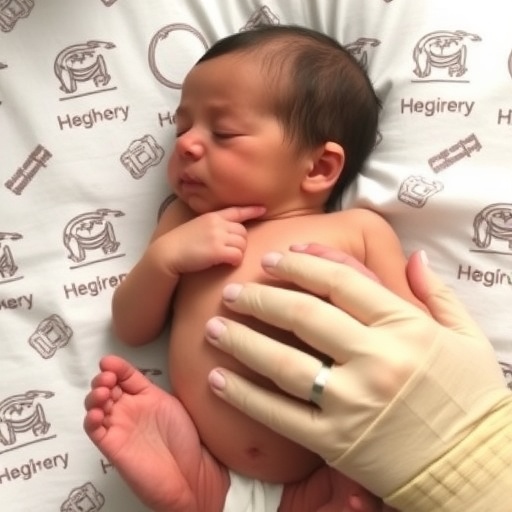Using evidence found in baby teeth, researchers from The Senator Frank R. Lautenberg Environmental Health Sciences Laboratory and The Seaver Autism Center for Research and Treatment at Mount Sinai found that differences in the uptake of multiple toxic and essential elements over the second and third trimesters and early postnatal periods are associated with the risk of developing autism spectrum disorders (ASD), according to a study published June 1 in the journal Nature Communications. The critical developmental windows for the observed discrepancies varied for each element, suggesting that systemic dysregulation of environmental pollutants and dietary elements may serve an important role in ASD. In addition to identifying specific environmental factors that influence risk, the study also pinpointed developmental time periods when elemental dysregulation poses the biggest risk for autism later in life.
[See video for more information here]
According to the U.S. Centers for Disease Control and Prevention, ASD occurs in 1 of every 68 children in the United States. The exact causes are unknown, but previous research indicates that both environmental and genetic causes are likely involved. While the genetic component has been intensively studied, specific environmental factors and the stages of life when such exposures may have the biggest impact on the risk of developing autism are poorly understood. Previous research indicates that fetal and early childhood exposure to toxic metals and deficiencies of nutritional elements are linked with several adverse developmental outcomes, including intellectual disability and language, attentional, and behavioral problems.
"We found significant divergences in metal uptake between ASD-affected children and their healthy siblings, but only during discrete developmental periods," said Manish Arora, PhD, BDS, MPH, Director of Exposure Biology at the Senator Frank Lautenberg Environmental Health Sciences Laboratory at Mount Sinai and Vice Chair and Associate Professor in the Department of Environmental Medicine and Public Health at the Icahn School of Medicine at Mount Sinai. "Specifically, the siblings with ASD had higher uptake of the neurotoxin lead, and reduced uptake of the essential elements manganese and zinc, during late pregnancy and the first few months after birth, as evidenced through analysis of their baby teeth. Furthermore, metal levels at three months after birth were shown to be predictive of the severity of ASD eight to ten years later in life."
To determine the effects that the timing, amount, and subsequent absorption of toxins and nutrients have on ASD, Mount Sinai researchers used validated tooth-matrix biomarkers to analyze baby teeth collected from pairs of identical and non-identical twins, of which at least one had a diagnosis of ASD. They also analyzed teeth from pairs of normally developing twins that served as the study control group. During fetal and childhood development, a new tooth layer is formed every week or so, leaving an "imprint" of the micro chemical composition from each unique layer, which provides a chronological record of exposure. The team at the Lautenberg Laboratory used lasers to reconstruct these past exposures along incremental markings, similar to using growth rings on a tree to determine the tree's growth history.
"Our data shows a potential pathway for interplay between genes and the environment," says Abraham Reichenberg, PhD, Professor of Psychiatry and Environmental Medicine and Public Health at the Icahn School of Medicine at Mount Sinai. "Our findings underscore the importance of a collaborative effort between geneticists and environmental researchers for future investigations into the relationship between metal exposure and ASD to help us uncover the root causes of autism, and support the development of effective interventions and therapies."
Additional studies are needed to determine whether the discrepancies in the amount of certain metals and nutrients are due to differences in how much a fetus or child is exposed to them or because of a genetic difference in how a child takes in, processes, and breaks down these metals and nutrients.
###
The Seaver Center for Autism Research and Treatment at Mount Sinai is actively recruiting twins or siblings, both with and without ASD, for this study. For more information or to participate, please email [email protected].
This work was performed collaboratively by researchers from the Icahn School of Medicine at Mount Sinai and the Karolinska Institutet in Sweden. The principal investigator in Sweden was Sven Bölte, PhD, Professor of Child and Adolescent Psychiatric Science and Director of the Center of Neurodevelopmental Disorders (KIND) at the Karolinska Institutet, who also leads the Roots of Autism and ADHD Twin Study Sweden (RATSS).
Funding for the study was provided by the Beatrice and Samuel A. Seaver Foundation, the National Institute of Environmental Health Sciences, the Swedish Research Council, the European Union and several Swedish foundations.
About the Department of Environmental Medicine and Public Health
The Department of Environmental Medicine and Public Health is committed to the prevention of diseases with environmental origins and encompasses the allied fields of occupational and environmental medicine, biostatistics, and behavioral science. Since its creation nearly 50 years ago, our department has been at the forefront of environmental health research, education, and clinical practice, leading to discoveries that have made a positive impact on millions of lives. We aim to prevent disease before it begins.
About The Senator Frank R. Lautenberg Environmental Health Sciences Laboratory
The Senator Frank R. Lautenberg Environmental Health Sciences Laboratory is dedicated to developing novel laboratory techniques that positively impact children's health. Their mission is to measure human environment comprehensively, including environmental chemicals, air pollution, social stressors, and nutrition. For more information, visithttp://labs.icahn.mssm.edu/lautenberglab/.
About the Seaver Autism Center for Research and Treatment at Mount Sinai
The Seaver Autism Center for Research and Treatment at Mount Sinai conducts progressive research studies aimed at understanding the multiple causes of autism spectrum disorder (ASD). The multidisciplinary team is composed of experts in the fields of genetics, molecular biology, model systems, neuroimaging, biomarkers, diagnosis, and experimental therapeutics who are dedicated to discovering the biological causes of ASD. The Center strives to develop innovative diagnostics and treatments for integration into the provision of personalized, comprehensive assessment and care for people with ASD. The Seaver Autism Center was founded through the generous support of the Beatrice and Samuel A. Seaver Foundation.
For more information, visit http://www.seaverautismcenter.org.
About the Mount Sinai Health System
The Mount Sinai Health System is an integrated health system committed to providing distinguished care, conducting transformative research, and advancing biomedical education. Structured around seven hospital campuses and a single medical school, the Health System has an extensive ambulatory network and a range of inpatient and outpatient services–from community-based facilities to tertiary and quaternary care.
The System includes approximately 7,100 primary and specialty care physicians; 12 joint-venture ambulatory surgery centers; more than 140 ambulatory practices throughout the five boroughs of New York City, Westchester, Long Island, and Florida; and 31 affiliated community health centers. Physicians are affiliated with the renowned Icahn School of Medicine at Mount Sinai, which is ranked among the highest in the nation in National Institutes of Health funding per investigator. The Mount Sinai Hospital is in the "Honor Roll" of best hospitals in America, ranked No. 15 nationally in the 2016-2017 "Best Hospitals" issue of U.S. News & World Report. The Mount Sinai Hospital is also ranked as one of the nation's top 20 hospitals in Geriatrics, Gastroenterology/GI Surgery, Cardiology/Heart Surgery, Diabetes/Endocrinology, Nephrology, Neurology/Neurosurgery, and Ear, Nose & Throat, and is in the top 50 in four other specialties. New York Eye and Ear Infirmary of Mount Sinai is ranked No. 10 nationally for Ophthalmology, while Mount Sinai Beth Israel, Mount Sinai St. Luke's, and Mount Sinai West are ranked regionally. Mount Sinai's Kravis Children's Hospital is ranked in seven out of ten pediatric specialties by U.S. News & World Report in "Best Children's Hospitals."
For more information, visit http://www.mountsinai.org/, or find Mount Sinai on Facebook, Twitter and YouTube.
Media Contact
Marni Goldstein
[email protected]
212-241-9200
@mountsinainyc
http://www.mountsinai.org
############
Story Source: Materials provided by Scienmag




